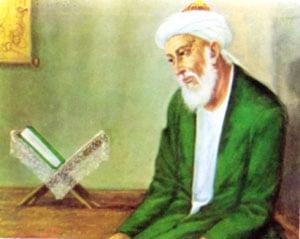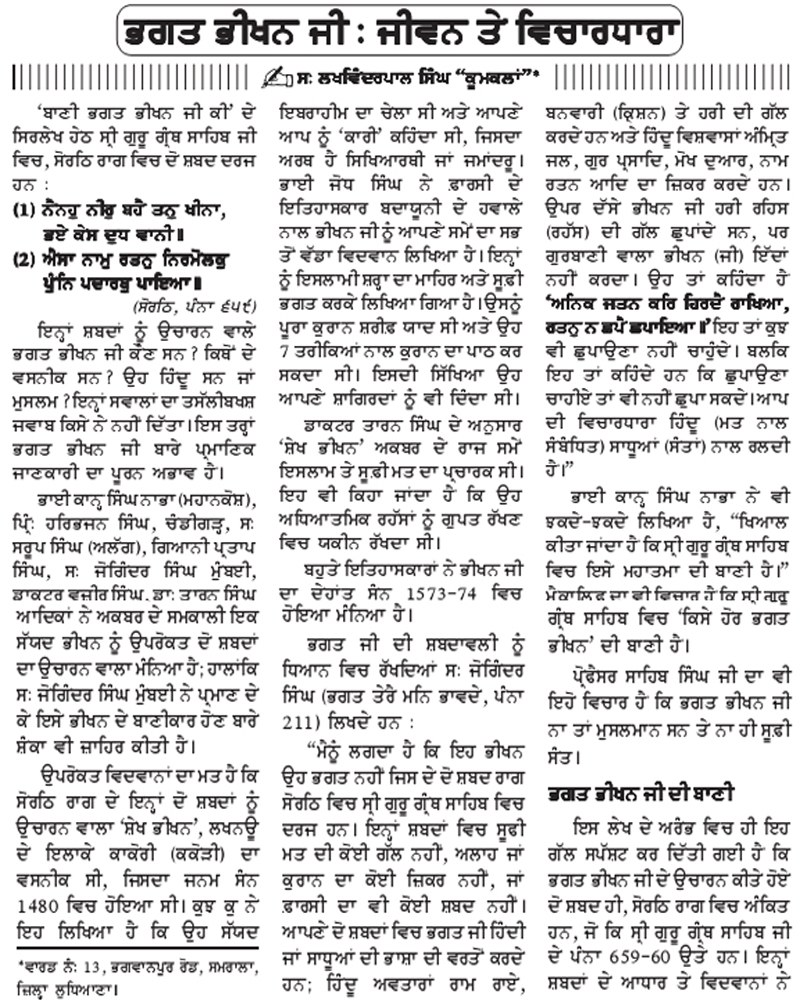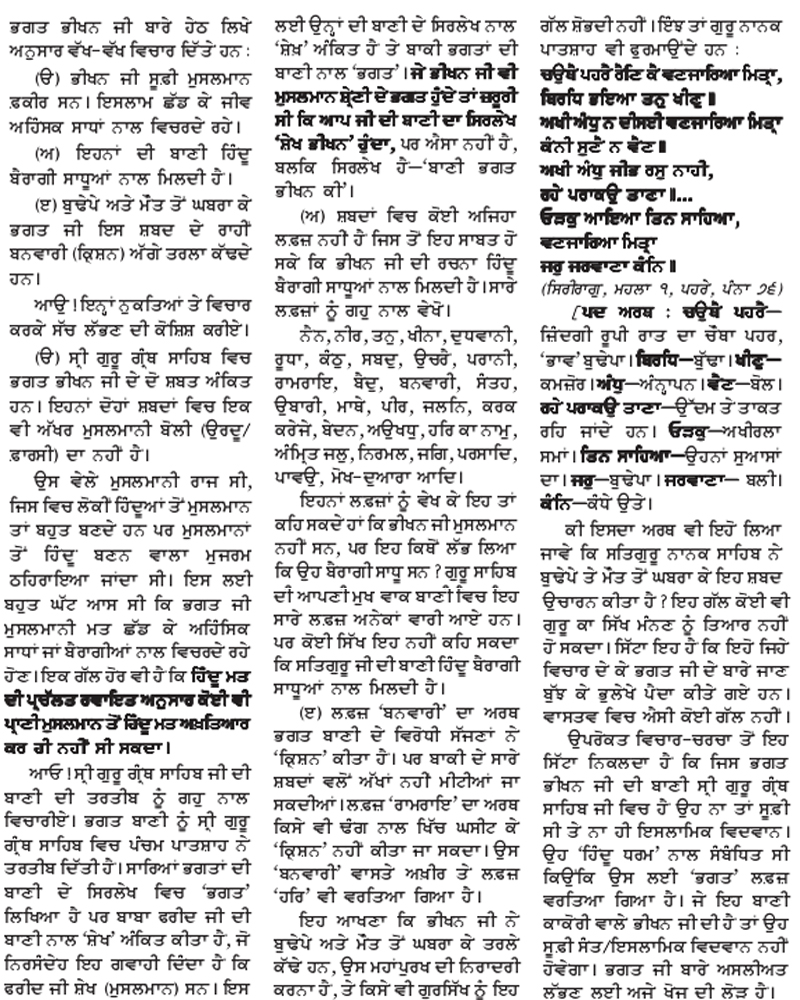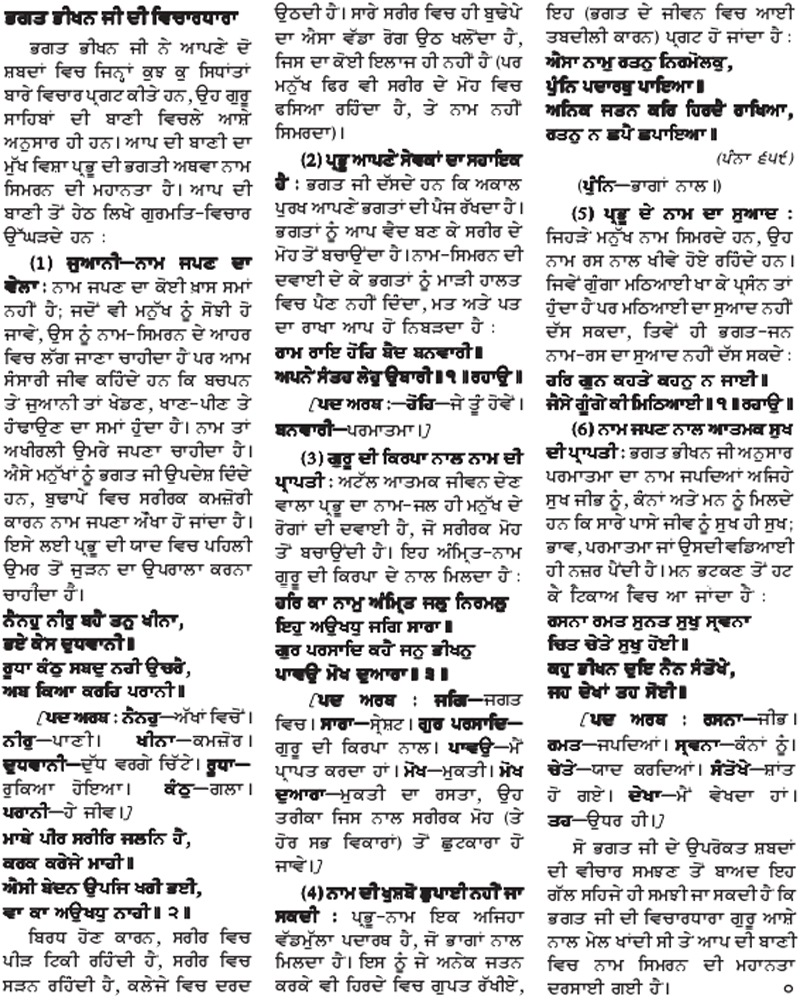Bhagat Bhikhan: Difference between revisions
No edit summary |
|||
| Line 5: | Line 5: | ||
Bhagat Bhikhan was the most learnt of the learned men of the time of Emperor Akbar. For many years, he was engaged in teaching and instructing the people. He stated that this spiritual succession was from Mir Saiyid Ibrahim of Irij. He left several children who were adorned with piety, wisdom, knowledge and virtue. The hymns of Bhagat ji resemble those of Sheikh [[Farid]] | Bhagat Bhikhan was the most learnt of the learned men of the time of Emperor Akbar. For many years, he was engaged in teaching and instructing the people. He stated that this spiritual succession was from Mir Saiyid Ibrahim of Irij. He left several children who were adorned with piety, wisdom, knowledge and virtue. The hymns of Bhagat ji resemble those of Sheikh [[Farid]] | ||
==BHAGAT BHIKAN (GURMAT VICHARDHARA | ==BHAGAT BHIKAN (GURMAT VICHARDHARA)== | ||
'''PAGE - 1''' | '''PAGE - 1''' | ||
Revision as of 08:07, 2 February 2007
BHIKHAN (1480-1573), a medieval Indian saint two of whose hymns are included in the Guru Granth Sahib. There are in fact two saints of that time sharing the same name— Bhakta Bhikhan and Bhikhan the Sufi. Bhakta Bhikhan was a devotee in the tradition of Ravidãs and Dhannã. He was born at Kakori near Lucknow in present day Uttar Pardesh state in India.. His hymns in the Guru Granth Sahib reflect his dedication to the Name of Hari (God) which he describes as "cure for all ills of the world."
Bhagat Bhikhan was the most learnt of the learned men of the time of Emperor Akbar. For many years, he was engaged in teaching and instructing the people. He stated that this spiritual succession was from Mir Saiyid Ibrahim of Irij. He left several children who were adorned with piety, wisdom, knowledge and virtue. The hymns of Bhagat ji resemble those of Sheikh Farid
BHAGAT BHIKAN (GURMAT VICHARDHARA)
PAGE - 1
PAGE - 2
PAGE - 3
Reference
- Excerpts taken from Encyclopedia of Sikhism by Harbans Singh. Published by Punjabi University, Patiala
- The Sikh Religion, Vol 6,, Max Arthur MacAuliff, Oxford University Press, 1909.




